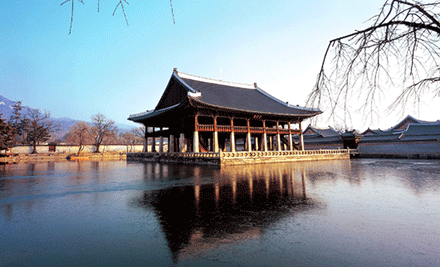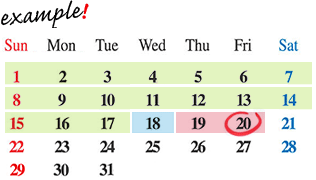Must do Seoul
ROYAL PALACE FULL-DAY TOUR (I)
-
- Price
- 87,000 KRW / Person
- Minimun Pax
- 1 Person
- Time
- Daily 09:00am ~ 17:00pm
- Inclusion
- Transportation, English-speaking Tour Guide, Admission Fees, Hotel Pick-up/Drop-off Service, Lunch, VAT.
- Exclusion
- Personal Expenses.
Tour Course
-
- Hotel
- Jogyesa Buddhist Temple
- The Royal Guard Changing Ceremony
- Gyeongbokgung Palace & National Folk Museum (Deoksugung Palace & History Museum on Tuesday)
- Pass by The Blue House
- Amethyst Center
- Lunch (Bibimbap)
- Changdeokgung Palace (Bukchon Hanok Village on Monday)
- Insadong Antique Shop Alley
- Ginseng Center
- Namdaemun Market
- Hotel.
Highlights
-
-
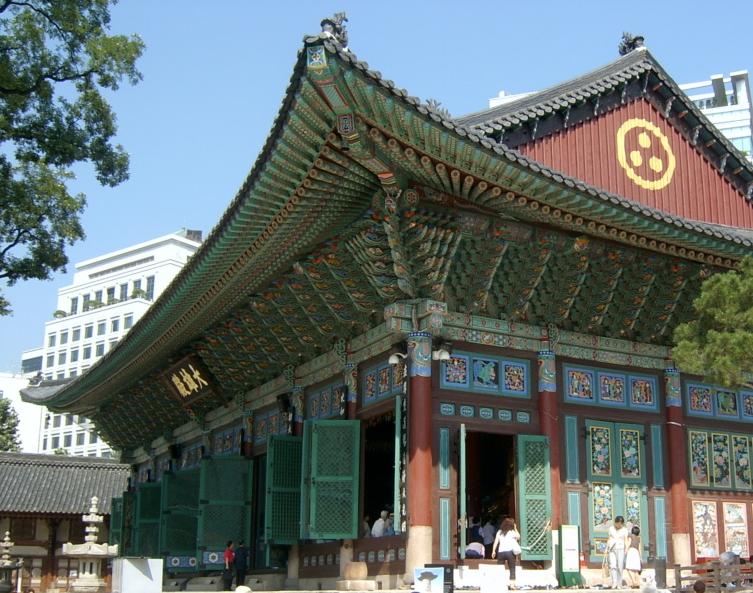
-
- Jogye Buddhist Temple
-
One hudred years old Buddist temple
22% of Korean believes Buddism and Chogeysa located in the center of Seoul is known as one of respected temples in Korea. Beyond its religion background, it attracts everyone with its artistic value. Beautiful golden statue of the budda and unique fragrance from the inside of temple are too amazing to miss.
Not only golden statue, there are 500 year-old pine tree, the beautiful main temple and other inspiring art pieces. It does not matter who you are and what is your religion. Everyone is welcomed to follow the manner and prey own wishes. There are always packed of people with their own wishes like health, wealth, and scholarship. Why don’t you try your own wishes? Although Buddha’s birthday is found exactly from lunar calendar, it is public holiday mostly in May and there are one of the biggest festival in Seoul with beautiful street lightings. You are already lucky enough if you plan to visit Seoul not to miss this.
- Jogye Buddhist Temple
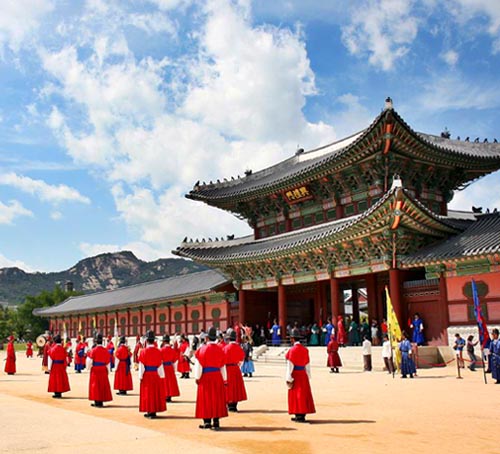
-
- The Royal Guard Changing Ceremony
- In ancient times the royal guards of Joseon Dynasty performed the given task by guarding the Gwanghwamun Gate the entrance of Gyeongbokgung Palace. The reenactment of the original ceremony began from 1996. The gate guardsmen perform the changing of the guards and hold a parade. The guards, uniforms, weapons and accessories as well as their strict ceremonial procedures catch the eyes of people especially foreign tourists when guardsmen perform the changing of guards in traditional costumes at the main gate of Gyeongbokgung Palace in downtown Seoul. Be sure to bring a camera to take lots of pictures.
- The Royal Guard Changing Ceremony
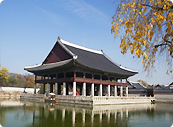
-
- Gyeongbok Palace
-
Gyeongbokgung, or the Palace of Felicitous Blessing, was the main palace of the Joseon Dynasty (1392-1910) and it opened in 1395, the fourth year of the reign of King Taejo, the founding monarch of Joseon.
The palace attained all necessary facilities and systems commensurate with its status as Joseon's primary palace during the reign of King Sejong. It was burnt down in 1592 during the Japanese invasions and remained in ruins until extensive reconstruction was undertaken in 1868. However, many of the structures were removed during the Japanese colonial rule (1908-1945).
The Cultural Heritage Administration has been restoring the palace since 1990. First of all, the old Japanese government-general building was dismantled and Heungnyemun and its cloisters were reconstructed. The bedchambers of the king and the queen, named Gangnyeongjeon and Gyotaejeon, as well as Donggung, or the East Palace, the residence of crown prince, were restored. Currently, Gwanghwamun, the palace's main gate, is being rebuilt. Thus, the palace is regaining its old splendor.
- Gyeongbok Palace
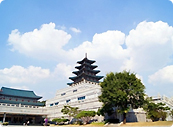
-
- National Folk Museum
-
The National Folk Museum of Korea, which was established in 1945, is located at the center of Seoul and functions as an educational venue that enables visitors to understand how Koreans have lived from traditional times to the present. The Museum investigates, researches, and acquires artifacts and various sources on the folkways and lifestyles of Koreans in the past and present.
The Museum's exhibition is divided into three halls and an open-air exhibition.
Hall 1 follows a timeline in the development of Korean folkways and lifestyles, starting from prehistory.
Hall 2 focuses on how people worked for their living and obtained the necessities of life, while Hall 3 covers the typical lifetime events of an upper class person in traditional Korean society.
Special exhibitions are also opened at least four times a year to broaden understanding of Korean folkways.
- National Folk Museum
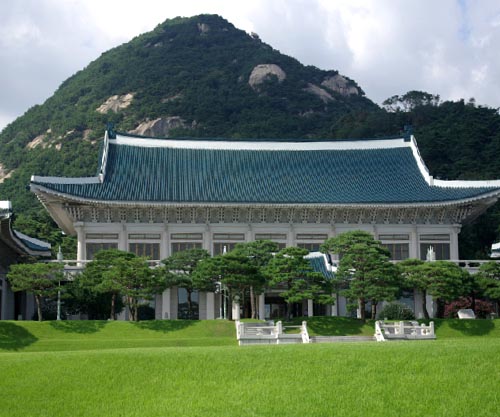
-
- Pass By The Presidential Blue House
-
Korean political system is presidential system which has been evolved and developed by Korean people after Korean war. The president’s term in office is 5 years and current president is Park, Geun Hye who is the first woman won the presidential election. The Korean president stays in the Blue house. The Blue house is not opened to the public where you can visit only your visit reservation was granted. However you can take a picture from outside.
In the blue house, there is a main building where private office for the president, press room, meeting rooms, and residential area are located and the other building where national secretary office, security office, Press center and Banquet hall are located.
The color blue represents eternity and peace and it applies to the roof color of the blue house and you cannot miss why it is called "the blue house".
- Pass By The Presidential Blue House
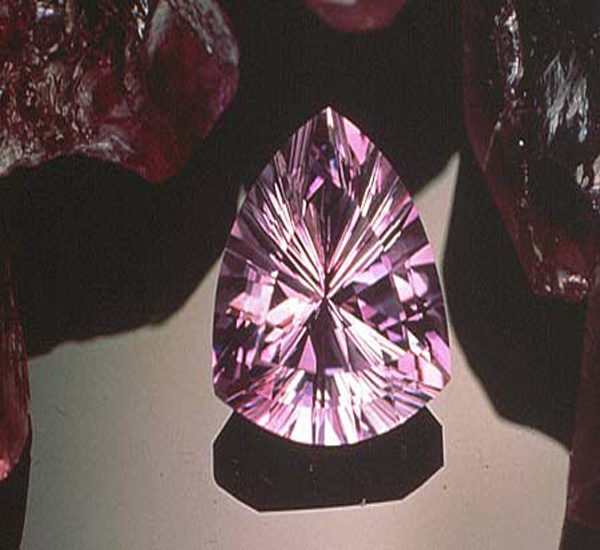
-
- Amethyst or Ginseng Center
-
The colour of Amethyst is as unique as it is seductive, though in fact this gemstone of all gemstones is said to protect its wearer against seduction.
Korean Amethyst is extravagance in violet since it has been formed from granite stone base since 5000 years. Moses described it as a symbol of the Spirit of God in the official robes of the High Priest of the Jews, and the Russian Empress Catherine the Great sent thousands of miners into the Urals to look for it. It was said to protect crops against tempests and locusts, bring good fortune in war and in the hunt, drive out evil spirits and inspire the intellect.
- Amethyst or Ginseng Center
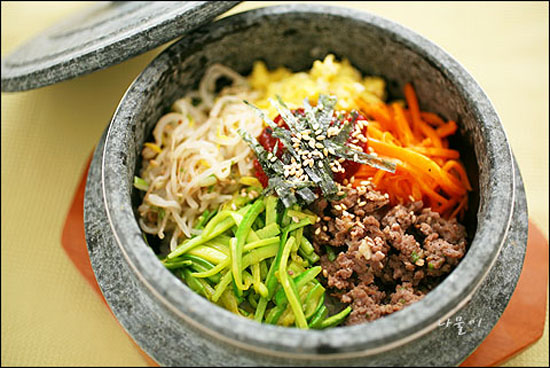
-
- Lunch(Bibimbap)
- Bibimbap is a signature Korean dish. The word literally means "mixed rice". Bibimbap is served as a bowl of warm white rice topped with namul (sautéed and seasoned vegetables) and gochujang (chili pepper paste), soy sauce, or doenjang, a salty soybean paste. A raw or fried egg and sliced meat (usually beef) are common additions. The hot dish is stirred together thoroughly just before eating.
- Lunch(Bibimbap)
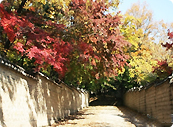
-
- Changdeok Palace
-
Changdoek Palace had participated in the history of Joseon Dynasty for about 500 years from the establishment in 1405 to the demise of Emperor Sunjong in 1926.
And as King Sejong said to King Munjong, Changdeok Palace, Kings of Joseon Dynasty's beloved palace shared Joseon's glory and pain according to the destinies of Joseon.
Changdeok Palace put down roots in the ridge facing south from Maebong, the vein of Bukak.
Its each building changed its axis according to natural geographical position and was arranged to be hugged by cozy valley.
The world recognizes originality of Changdeok Palace because it is in harmony with nature, and its beautiful Biwon (back garden) is harmonized with various pavilion, ponds, trees and oddly shaped stones and rocks...
- Changdeok Palace
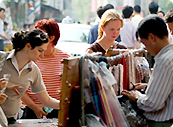
-
- Insadong Antique Shop Alley
-
The streets of Insadong are alive with traditional culture.
The area that is now known as Insadong has been the center of culture since the Joseon era. Over the years a wider variety of arts have continued to move their way into this neighborhood making it one of the best places in the world to find diverse genres of art.
In 1997, car traffic was banned on the main street of Insadong making it friendlier for visitors and improving the overall general atmosphere.
Forty percent of all antique stores in Korea can be found in Insadong. That is quite an astounding number for just one small neighborhood. But as you begin to explore the tiny alleys shooting off from the main street you start to realize that this is only the beginning. As you continue to wander around the alleys and byways of Insadong you will find stores selling old books, pictures and calligraphy. You will also undoubtedly find old photographs, pottery, wooden containers, jewelry, ceramics and earthenware.
- Insadong Antique Shop Alley
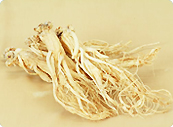
-
- Ginseng Center
- Referred to as a 人蔘(people' root) due to its resemblance to the Human form' Korean ginseng is regarded as the most valued herb. The efficacy of fully mauture 6 year-old Ginseng has been well known around the world. This is the place you can hear informations how we select the soil to plant ginseng' how much time we should wait until it gets matured and so on. Friendly staffs of this center give you not only explanation on Korean gingseng but also some sample of ginseng to drink for your refreshment.
- Ginseng Center
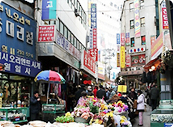
-
- Namdaemun Market
-
Namdaemun Market is the largest traditional market in Korea with over 10,000 stores that line the streets around Namdaemun (Gate), the main southern gate of the old city wall.
It boasts one of the largest distribution structures in Korea, providing local products, daily living essentials, food products, medical supplies and more to retailers and consumers across the country.
Due to the wholesale nature of the market, shoppers can comparison shop for the lowest prices on all sorts of goods.
Namdaemun Market is also packed with interesting things to see and eat, making it a popular destination for both locals and international visitors alike. So whether you're looking for traditional oriental medicine or imported drugs, traditional Korean food or imported snacks, Hanbok attire or a Halloween costume, Namdaemun Market is the place to go.
- Namdaemun Market
-


